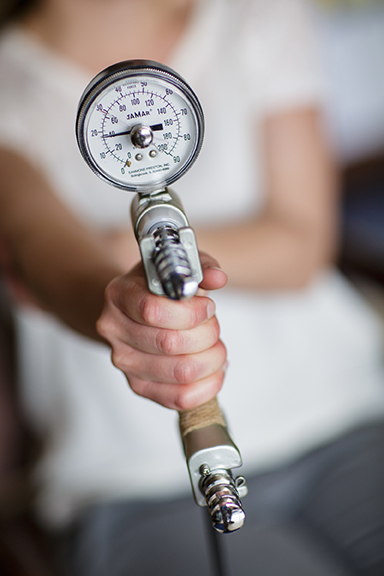Grip strength may help identify people with undiagnosed diabetes
By Jill Pease
 Your grip strength may indicate whether or not you have undetected diabetes and high blood pressure, according to a study published in the American Journal of Preventive Medicine.
Your grip strength may indicate whether or not you have undetected diabetes and high blood pressure, according to a study published in the American Journal of Preventive Medicine.
Grip strength measures could be especially useful for identifying diabetes and high blood pressure in adults who have healthy weight obesity, also known as normal weight obesity or “skinny fat.”
The condition is characterized as having a body mass index within the normal range, but a high proportion of fat to lean muscle, typically more than 25 percent body fat in males and 35 percent in females. These individuals may be less likely to get regular screenings for diabetes and hypertension because they aren’t considered overweight or obese by BMI measures alone, said Arch G. Mainous III, Ph.D., the study’s lead investigator and chair of the department of health services research, management and policy in the College of Public Health and Health Professions.
“We’ve had a significant amount of interest and focus on obesity, and rightfully so,” said Mainous, the Florida Blue endowed chair of health administration. “But there is a concern that health problems in people who have decreased muscle mass, but don’t fit the criteria of being overweight, are being missed because these people aren’t targeted by screening programs.”
For the UF study, researchers analyzed data from the 2011-2012 National Health and Nutrition Examination Survey, a nationally representative study that uses a combination of interviews and physical examinations. The team assessed grip strength measurements, blood pressure readings and blood sugar levels for nearly 1,500 adults age 20 and older who had a BMI within the healthy weight range — 18.5 to 24.9. People with undiagnosed and diagnosed high blood pressure and diabetes had weaker grip strength than other healthy weight individuals who did not have those conditions.
“We still have a ways to go before we can actually implement grip strength testing and make it clinically useful to a primary care physician, but I think this a good first step toward determining who might need further testing,” Mainous said.
